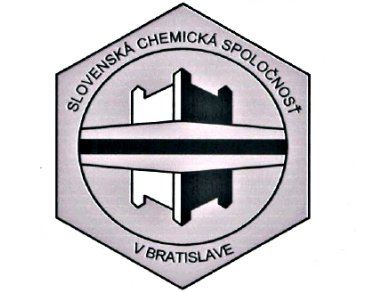A community of Slovak and Czech chemists met for the fifth time in High Tatras in Slovakia. The 65th Congress of the Slovak and Czech Chemical Society organized by the Slovak Chemical Society was held from September 9–13, 2013. More than 400 chemists and chemical engineers from Slovakia, Bohemia, Moravia, Poland, and Austria participated.
Opening Ceremony
The Opening Ceremony of the conference was held in the cinema theater Tatry in Tatranska Lomnica. The participants were welcomed by the mayor of the town of Vysoke Tatry, Mr. J. Mokos, then by Professor Maria Omastova, the president of the Slovak Chemical Society and by Professor Jitka Ulrichova, president of the Czech Chemical Society. The plenary opening lecture on ChemPubSoc Europe and the Slovak Chemical Society was presented by Dr. Eva E. Wille, Wiley-VCH, Weinheim, Germany.
Eva Wille, as a representative of ChemPubSoc Europe, was awarded with the ChemPubSoc Europe Medal of the Slovak Chemical Society. The president of the society Maria Omastova, Professor Viktor Milata, FCHPT STU, Bratislava, Slovak Republic, and the president of the meeting Professor Dušan Velič, Comenius University, Bratislava, Slovak Republic, presented the award to her in honor of her work “for the dissemination of chemical knowledge worldwide”.

Award Ceremony (left to right): Eva E. Wille, Maria Omastova, and Viktor Milata, Eva E. Wille, Dušan Velič, Maria Omastova.
Scientific Program
Although the congress is predominantly for Slovak and Czech chemists, delegations from Poland and Austria were also present. The congress ran in six sections: Analytical and Physical Chemistry, Inorganic and Material Chemistry, Organic Chemistry and Polymers, Education and History of Chemistry, Food and Environmental Chemistry and Biotechnology, and CHEMPROGRESS devoted to chemical engineering.
Among the invited speakers was Professor Miroslav Urban (pictured below), Comenius University in Bratislava, Slovak Republic, who discussed the combination of theoretical and experimental methods to investigate the electron affinity of uracil. Interactions of nucleic acid bases (NABs) with their environment have significant impact on their chemical properties. Urban presented adiabatic electron affinities (AEAs) and the vertical detachment energies (VDEs) of the uracil molecule interacting with one to five water molecules.

Lively discussions during the Poster Session and Professor Miroslav Urban during his talk.
Professor Martin Bajus, Slovak Technical University, Bratislava, Slovak Republic, talked about thermal and catalytic processes for new generation biofuels. Possible options for the conversion of lignocellulosic plant materials include: thermal cracking, catalytic cracking, pyrolysis, catalytic reforming, Fischer-Tropsch synthesis, hydro-dehydrogenization, hydrocracking, hydrorefining and decarboxylation, as well as biocatalytic conversion of lignocellulose into bioethanol, which requires upgrading of existing processes of fermenting sugars by using enzymatic-enhanced pretreatment of hemicellulose.
Leopold Anton Ruprecht
An Evening Seminar was devoted to Sloakia’s most famous chemist of the 18th century: Leopold Anton Ruprecht and the 265th anniversary of his birthday was celebrated. Born in Smolník in 1748 and died in Vienna in 1814, Ruprechtová was the first professor of chemistry from Slovakia. He made the school Banska Stiavnica, the Ore Mines and Mining Academy, well-known within Europe through his way of teaching chemistry and metallurgy.
In conjunction with Ignatius Born, he introduced the so-called European Amalgamation Process to Europe by building and running the first amalgamation plant in the world in Selmec, Hungary. Together with Franz-Joseph Müller von Reichenstein, he was involved in the discovery of the element tellurium.

Dušan Velič in a traditional Slovak costume during the Speakers Lunch.
Closing Ceremony
During the Closing Ceremony of the congress it was stated that this international meeting between Slovak and Czech chemists underlines the EuCheMS’ philosophy to bring young and old chemists from Europe closer together and foster collaboration.
The next meeting is planned in September 2014 in Ostrava, Czech Republic.

Also of interest:
- Roots of our Practice of Science,
Dušan Velič, Karen Hindson,
ChemViews Mag. 2012.
Banska Stiavnica, Banská Štavnica, Schemnitz, or Selmecbánya, a town with a lively political history and groundbreaking for science



